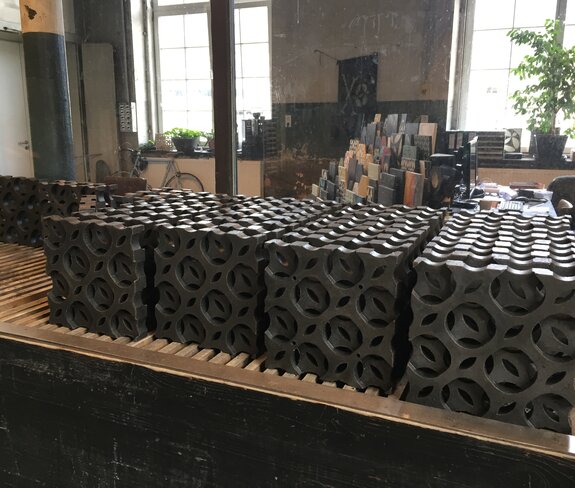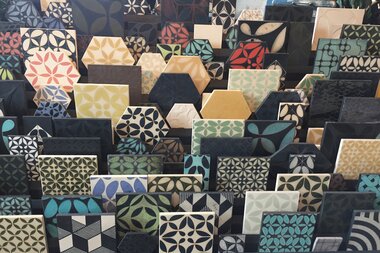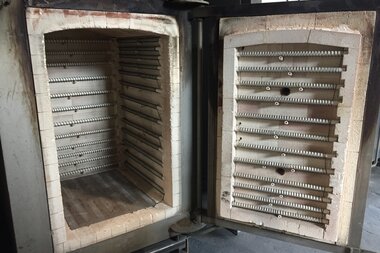
A visit to the tile manufactory
A look behind the scenes of this special craftsmanship in Bludenz
A real treasure is hidden behind the doors of this former locksmith's shop in the Klarenbrunn factory: the KARAK tile manufactory, a young company from Vorarlberg that combines tradition and modernity in a fascinating way. Here, the craft of tile firing is masterfully understood and the elements of earth, fire, air and water are brought together in perfect harmony.
Not just a tile
The special design of the tiles is the result of the millennia-old Japanese "raku" firing technique, which gives each tile a unique surface. No two are the same - each one is unique. Individual patterns, which are created in close consultation with the customer, make each project unique. The digitally developed ornaments form special geometric patterns that bridge the gap between East and West. Particularly exciting: the basis of the tile, clay and loam earth, is produced in collaboration with Lehmtonerde Baukunst GesmbH in Schlins.
The elements and the process
Earth - The mass of clay, earth, quartz sand and fireclay is carefully mixed together and pressed into the desired tile shape before being pre-fired. Each tile is then closely inspected and, if necessary, polished. Unbelievable, but true: each tile is handled up to 30 times before it is finished!
But the exciting part is yet to come: how do these unique patterns get onto the tiles? This is where the screen printing process comes into play, in which the desired ornaments are pressed onto the tiles using templates.
Fire - now it's getting hot! The ceramic tile is "baked" in the oven at around 1000°C. This firing process gives the tile its strength and characteristic sound when tapped.
Air - careful, hot! The tiles are now taken out of the kiln individually and very carefully with tongs and immediately placed in a bed of sawdust and buried underneath. Now the magic happens... The glaze colors are always a surprise! For the specially made glazes, color pigments are mixed with metal oxides such as copper, tin, chrome and iron. After firing, they unfold their splendor on the typical black background, like geometric flowers blossoming in the ornaments. The fine cracks in the glaze, the so-called crackle, give the tiles a special liveliness - an echo of the archaic Raku firings.
Water - After the sawdust bath, the almost finished tiles are placed in a water bath to cool them down. The temperature shock gives them additional crackles from time to time. After cooling, the tiles are polished for days with vinegar and/or citric acid until the color no longer changes. It's almost like magic how something so unique is created. And now it's finished, our tile - one more beautiful than the next.
What an exciting experience to get an insight into the everyday life of a tile tiler! Especially when it comes to such extraordinary tiles. The love and passion that goes into every single tile is truly impressive. A special product with special stories, created by special people and with special materials.
Find out more:


